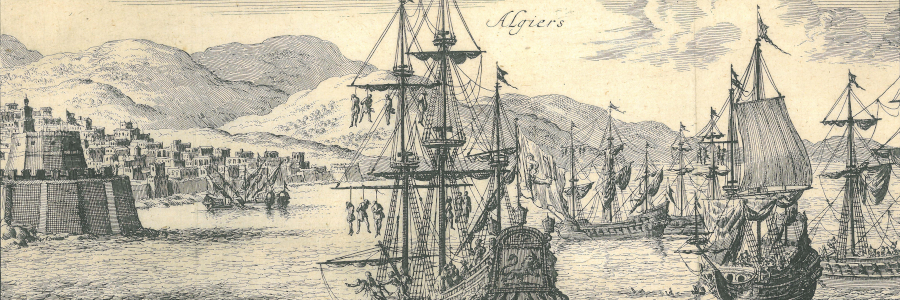
Pierre Dan, Historie van Barbaryen, En des zelfs Zee-Roovers (1684); fol. 80.
The Boundaries of Fact and Fiction
Barbary Captivity Narratives (1530–1820)
Funding organization: Austrian Science Fund (FWF)
Stand-Alone project: P 34745-G – €403,220.90
Project duration: 2022–2027
Principal investigator: Univ.-Prof. Dr. Mario Klarer
Project description
Between 1530 and 1820, up to one million Europeans from all over the continent, including Italy, Germany, the Netherlands, and Iceland, were enslaved by North African pirates. Unlike Caribbean piracy and American slavery, the hundreds of thousands of captives on the Barbary Coast, as the Maghreb was then pejoratively called, have practically vanished from today’s cultural memory. After their escape or ransom from North Africa, many European and some American returnees recorded their slave experiences in the form of highly popular Barbary captivity narratives. These texts—a unique type of ‘history from below’—are hitherto largely neglected but crucial sources on early modern notions of slavery, Islam, and North Africa, and also impacted the abolition of American slavery. At the same time, they were literary models for the modern novel, the autobiography, and the African American slave narrative. The project maps out these literary and historical dimensions for the first time.
There are almost two hundred known Barbary captivity narratives written in more than a dozen languages. Since they are both literary texts and historical documents, their analysis requires a joint effort by literary and historical scholarship. The advancement of the humanities due to digital methods (‘digital humanities’) helps to structure and analyze the texts. An openly accessible database will offer a complete list of all known and newly discovered Barbary captivity narratives. It will also provide scans of the manuscripts or imprints together with their transcriptions. The structure of these transcriptions will follow certain rules, making them computer readable and digitally searchable. The names of people, places, dates, important events, etc. will be tagged, allowing for a variety of search possibilities. Select English translations will help make the texts accessible to a wider scientific community and to the public.
Drawing on the database, the project will establish the Barbary captivity narrative as a unique, pan-European literary and historical genre. The interpretive work will focus on the overall relevance of this genre, its impact on the novel and other literary genres, opera, and the visual arts, as well as the dialogue between autobiography and fiction by using Barbary captivity narratives as methodological case studies. These efforts will result in research monographs and articles in addition to the database with its lists, transcriptions, and translations.
The project will establish Barbary captivity narratives as a cross-national and cross-disciplinary genre for the first time, thereby helping to revise substantial chapters of early modern history, literary history, and slavery studies.